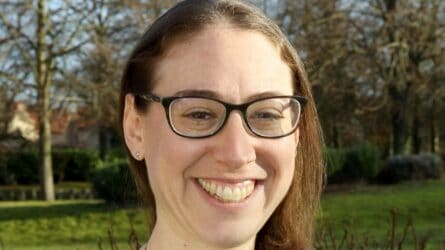Linley & Simpson Go the Extra 300 Miles for Martin House
Martin House partners Linley & Simpson aren’t afraid of a challenge when it comes to fundraising for their favourite cause. From tackling…
As doctors, we are concerned with the medical needs of the children and young people who receive care from us, but the thing that’s so wonderful about being a doctor in a children’s hospice is that you have such an amazing team around you.
To have really good care, you need to have the medical team, and the nursing team, but you also need wellbeing care around that — so the art and music therapy, the psychological support. It’s really holistic, where we’re looking at the whole child and their family. It’s the best way of giving medical care, where you can do it in this really homely, supportive environment.
We have a small team of doctors at the hospice, two part-time consultants, three specialty doctors and two trainee consultants (we are one of only three training centres in the UK for paediatric palliative medicine), and between us we provide 24/7 cover.
Parents know there’s a doctor available at the hospice at any time, day or night, so we get a lot of phone calls from families. Sometimes we can advise them over the phone, other times we may recommend they go to hospital, or arrange for them to come into the hospice.
An average day for a doctor at the hospice begins with meetings. First, we have a strategic briefing with the clinical leadership team, then a handover with the nursing team, where we discuss every child and young person in the hospice, or currently in hospital, or who need support at home. This informs our plan for the day, to ensure we can meet the needs of all the children and young people who need our input.
After that it varies hugely. Some days I will be reviewing children and young people in the hospice, looking at medicines, writing advance care plans, co-ordinating their care. Other days I will make home visits, and on others I’ll be doing phone consultations with people at home.
One day a week I try to go to Leeds hospitals, and others in our region, to catch up with the patients and staff there. There are always some of our children in hospital, but sometimes there may be patients we don’t know, but who have palliative care needs, so we may be asked to input on things like symptom control.
Sometimes we will meet families with the hospital specialists at the point of diagnosis, so they are aware we are part of the team, and make sure they are aware of their options.
Often children have multiple issues, with different specialties involved in their care, so we join in multi-disciplinary meetings, where we come together to discuss the child as a whole. One unexpected benefit of the pandemic is that these are now online, and so much easier to organise.
Of course, the pandemic brings challenges too. Understandably, families have been nervous about people visiting them at home, and as children are mostly coming to the hospice alone, it’s more difficult to find the time to sit down with families to talk about their child.
Wearing PPE also feels less warm and homely, and more clinical. It’s hard for others to see our facial expressions in a mask, particularly if you have to discuss something emotive. The lack of touch too — I’m someone who will often reach out and take someone’s hand, and of course we can’t do that at the moment. That feels really difficult for me and for families.
I’m very proud though that throughout this time we’ve maintained our 24/7 service to families, and while we’ve had to change some of the ways we work, we are still giving the care and support children and their families need.

Martin House partners Linley & Simpson aren’t afraid of a challenge when it comes to fundraising for their favourite cause. From tackling…
As Father’s Day approaches, we acknowledge this can be a profoundly difficult time for many, especially for dads who have experienced the…
At Martin House, we are always touched by the incredible support we receive from our community. One such act of kindness has…